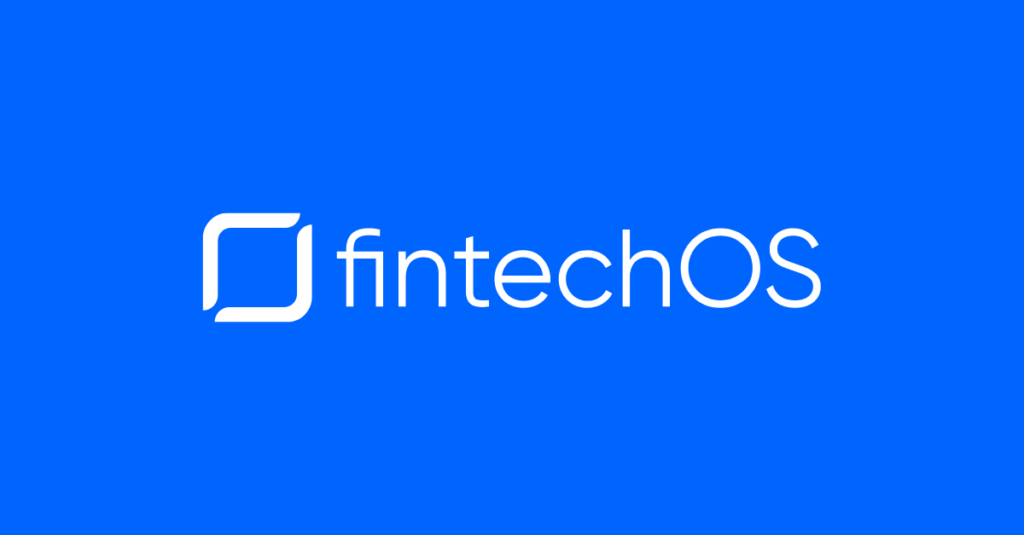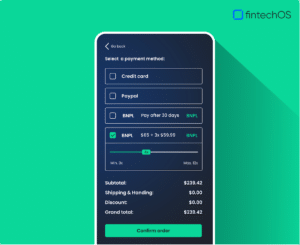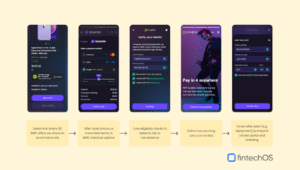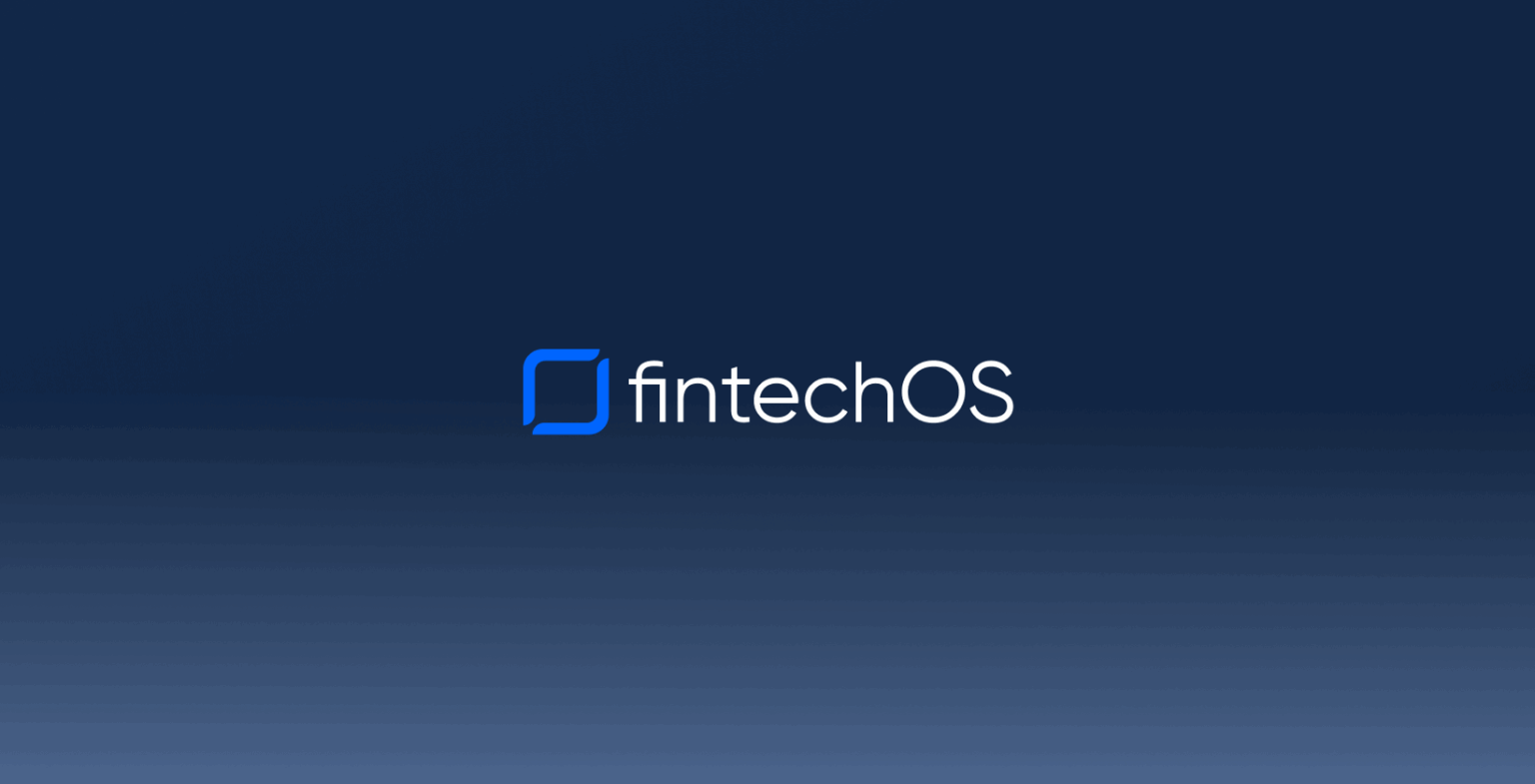FintechOS enables banks and lenders to add BNPL to roadmaps

New features in the FintechOS digital financial innovation platform from May 2022 are designed to make it easier and faster for established banks and lenders to create embedded lending products so they can participate in the booming market driven by global consumer adoption of Buy Now Pay Later.
London, UK – 10 May 2022 – FintechOS has launched new features in its platform allowing digital innovation teams in banks and other lenders to create their own Buy Now Pay Later (BNPL) solutions. With experience helping banks and lenders build digital lending products, including a number of pioneering embedded finance projects in Europe, FintechOS is uniquely placed to empower established financial brands to step outside the box of traditional payments and credit product definitions, and tap into the growth potential of the booming BNPL market.
While the global pandemic fast-forwarded the growth of ecommerce by 10 years, many established banks and lenders have found their products are still frustratingly stuck in the past due to limitations of their technology stack and the lack of control afforded to their digital teams.
Meanwhile, challengers like Klarna and Monzo have been fast to capitalize on the opportunity in payments and offer BNPL solutions that are both more convenient and more inclusive than traditional credit cards. FintechOS believes all banks and lenders should be leaning into this trend as a way of bringing in new generation customers, generating new sources of non-interest revenue via merchant fees, and diversifying the value proposition of their digital current accounts and payment wallets.
FintechOS provides digital teams in banks and lenders with a lean full stack financial innovation platform that allows them to build and edit BNPL and embedded lending products, customer journeys, and business automation logic in a single orchestration platform, empowering a wide range of digital developers and stakeholders via an open, low-code approach.
Examples of financial products that can be created specifically to be embedded in ecommerce checkouts and other points-of-sale include true “pay later” offers where the customer pays nothing until a later date, e.g. 30 days, and “sliced” or “split” payment offers where a purchase is paid in installments, usually interest-free if paid completely in a given time frame. As there are many parameters in constructing offers that are effectively localized for a particular market and personalized to target customer segments, banks and lenders value a high degree of control and configuration in order to differentiate their offerings versus competitors. According to FintechOS, achieving success will require a new-generation technology stack which doesn’t box innovators into traditional personal loan or overdraft constraints.
BNPL and embedded lending propositions created with FintechOS technology can be integrated into existing business administration systems or administered via fully configurable customer and staff portals, so that the business can run the complete lifecycle of BNPL lending and servicing in a highly tailored model, while also benefiting from the scalability and performance of the underlying cloud-native SaaS-based technology stack.
Having successfully completed several pilot projects with embedded finance pioneers in Europe, we’re delighted that Buy Now Pay Later features are now generally available to global banking and lending enterprises to create and iterate their own natively embeddable products and journeys. These are very exciting times for financial innovators and we look forward to seeing what digital maker teams will create next using the FintechOS platform.
— Marcio Spinola, Chief Product Officer, FintechOS
Right now we as an industry are just scratching the surface of BNPL opportunities – we can see them becoming more and more exciting in the future.
— Laura-Maria Vizir, Chief Product Officer, tbi bank
To learn more, schedule a meeting with FintechOS.
END MAIN PRESS RELEASE


FAQs
What makes BNPL different to traditional financial products?
BNPL is a term covering a range of solutions that combine a payment method with a short-term lending product, with that offering embedded at the point of sale. So as an example, to buy something expensive like a new sofa, instead of researching lenders and applying for a loan, and waiting for the cash to come in before being able to make the purchase, the consumer could now find a “pay in instalments” offer – which could be interest-free – at the point of sale. This greatly improves convenience for shoppers and sales for merchants, and this kind of win-win potential exists in all shopping categories and contexts. Because the credit extended to consumers is much more contextual to a particular merchant, shopper status, and products being bought, BNPL providers can take a new, more granular, and potentially more inclusive approach to risk and eligibility decisioning, opening access to a greater range of customers, and providing them with a genuinely different value proposition compared to traditional credit cards or loans.
Why is BNPL hard for incumbent banks and lenders to create?
While incumbent FIs have spent large amounts of resources on digital transformation, in many cases their capabilities to innovate remain extremely constricted by a combination of outdated technologies, technical debt, and over-reliance on third-party developers.
BNPL and other new ideas in embedded finance demand an extra level of control over the tech stack, and integration of a broader array of experts into a digital team. Traditional product teams in financial institutions often know what they want to build, but the technology and wider organization’s flexibility around innovation simply cannot deliver.
Who creates a BNPL proposition, a bank, or a retailer?
The short answer is that both sides are needed, and new BNPL solutions are being created all the time with partnerships and technology being initiated by either side.
BNPL solutions require a partnership between a licensed financial institution to act as the lender, and retailer/merchant parties whose customers benefit from the BNPL offer at the point of sale. Who brands what parts of the customer experience – the extent to which the BNPL offer is presented as from the merchant or an independent BNPL provider – is a variable of the business model.
Some FIs will already have a merchant/ecommerce partnership in play, while others will be looking to build a skeleton solution first in order to showcase and build partnerships. Both approaches are possible with FintechOS. What is important is that an embedded finance proposition, by design, has to solve for a variety of criteria and user journeys that initiate and possibly complete in a third party UX zone.
How would a bank or lender create BNPL products with FintechOS?
The FI will use FintechOS as a digital product factory to build, launch, and iterate new embedded digital customer experiences. Digital teams use the platform to design and roll out digital journeys, automation logic, and the financial products themselves, along with the user interfaces required for end customers, merchant and FI staff, and administrators. Unlike traditional financial product platforms, each aspect can now be built from the start as adaptable to the context of a third party embedded customer experience.
As well as creating and orchestrating financial products and journeys, the FI can optionally use FintechOS as the system of record via the platform’s lean core capabilities. This is particularly valuable to new BNPL ventures which do not wish to be constrained by dependence on legacy core banking systems.
What can banks and lenders build in BNPL?
In increasing order of digital ambition and complexity, established lenders can:
- Provide liquidity and loan underwriting services to existing BNPL or embedded loan services, integrating through APIs to operate automatically and in real-time
- Update existing lending products to be packaged and delivered headlessly in third party channels (this is the primary use case for digital lenders and banks leveraging FintechOS High Productivity Fintech Infrastructure for BNPL-like channel growth)
- Design and roll out new BNPL-native products for (in partnership with) ecommerce/checkout players
- Build a consumer-direct BNPL wallet app and therefore a B2C GTM either in conjunction with existing banking/insurance brand or a new partnership
What are some key strengths of FintechOS for building BNPL propositions?
Key capability areas, which distinguish a BNPL solution built with FintechOS from traditional lending platforms, include:
- Creation of natively embeddable lending products or BNPL-native products that can take advantage of new dimensions of data for eligibility and credit/risk scoring, and are designed to be delivered in third party CX contexts.
- Packaged rulesets that define visibility and eligibility of BNPL offers, taking advantage of unlimited new data dimensions from the embedded context, so that customers get an instantly relevant offer without having to go through an initial application process.
- Fully self-service agreement, contracts, and servicing which all have the potential of being co-branded and content managed by different combinations of lender / BNPL / merchants.
In addition, since FintechOS is all one platform, FIs on the platform benefit from continuous enhancements and rollouts of new features, so that the possibilities open to them increase over time rather than being restricted to a single original use case.
Can ecommerce sites and other merchants create their own BNPL solutions?
Yes, some ecommerce providers with experience in handling their own checkout payment options are choosing to develop BNPL-type payment options of their own with FintechOS technology. Working independently, a merchant or marketplace can replicate the customer experience of BNPL supported by store credit using novel credit/risk criteria. However, this would not represent the full scope of a true BNPL solution without some kind of formal lender taking the role of creditor and hence providing cashflow to the merchant. As more regulations emerge around BNPL we would also expect to see established financial institutions as being in a better position to create the underlying BNPL products than non-financial businesses such as retailers attempting to go it alone.
Highly flexible BNPL product management systems such as that made available by FintechOS will provide an advantage for BNPL providers to attract new merchant partners with differentiated offerings, thanks to the ability to tune offers and control where IP of key aspects of the product and CX sit, on a partnership basis instead of a single fixed model globally.




